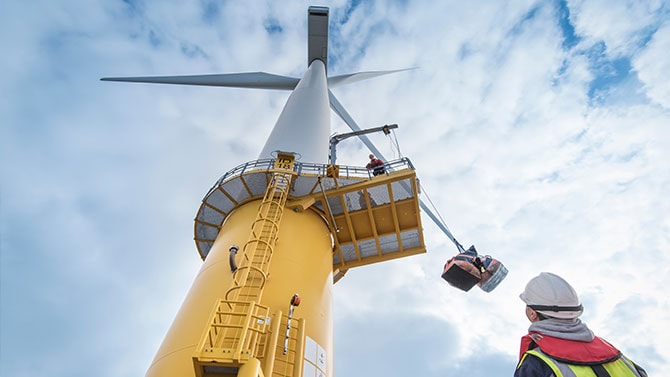
EU Fit for 55: Council and EP ready to negotiate EU ETS
29/06/22
Update: the EU Parliament and the Council of the EU reached a provisional agreement on the Carbon Border Adjustment Mechanism (CBAM) on Tuesday morning, 13 December 2022. Some details such as the transition period and phase out period are still dependent on the outcome of the negotiations on the EU ETS revision. After the EU Parliament and the Council EU reach agreement on this, Parliament and Council will have to formally adopt the CBAM for entry into force from 1 October 2023. Please see our CBAM detail page for more information. The information below has not been updated and dates from 29 June 2022
Very early morning 29 June 2022, the Council of the European Union adopted its negotiation position, their so called ‘general approach’, on five of the Fit for 55-proposals: the revised EU ETS, Effort Sharing Regulation, CO2 emissions standards for cars and vans, LULUCF and the Social Climate Fund. The Council’s general approach is somewhat more conservative than the position the European Parliament has taken. For instance, as the start date of the phase out of free CO2 emission rights the Council agreed on a ten year period, 2026 until 2035. In the subsequent negotiations with the European Parliament (EP) that are planned to take place this Fall, the EP’s position is a five year phase out, commencing in 2027.
The Council’s position on the Carbon Border Adjustment Mechanism (CBAM) was already agreed upon last March. This brings it to a total of six Fit for 55 proposals that are ready for the so-called Trilogue negotiations between the EP, Council and the EC. The Trilogue negotiations are expected to take place this Fall, since an important part of the measures are intended to come into force by 1 January 2023.

What does this mean for your organisation?
Although the final proposals following the negotiations between the Council and the EP are still pending, it is very likely that these will undoubtedly have a significant impact on companies and individuals. The outcome needs to meet the agreed targets of the European Climate Law: a binding EU 2030 climate target of a domestic reduction of net greenhouse gas emissions (emissions after deduction of removals) by at least 55 percent compared to 1990 levels by 2030.
Now is the time for companies to scrutinise their supply and value chains, get a clearer view on their carbon footprint (direct and indirect) and the potential costs to consider following these upcoming measures. Also, processes need to be put in place to meet the administrative compliance obligations, e.g. for the CBAM during the transition period starting as per 1 January 2023. Doing this now creates the time to obtain the required insights and subsequently implement adequate measures to mitigate the additional taxes and levies that will inevitably follow from the measures included in the Fit for 55 Package. In order to support the business case for investments reducing the carbon footprint, there is a wide range of EU and domestic incentives available. Ideally, both the additional tax measures and the available incentives are an integral part of a sustainable business case assessment.
Position of the Council (and differences with the proposals of the EP)
As said, the Council’s general approach on the Fit for 55 proposals is overall more conservative than the negotiation position of the European Parliament on the different proposals. Below we have listed the main positions on the various proposals of the Council and the differences with the formal negotiation position of the EP:
- The Council has agreed to a ten years phase out, between 2026 and 2035, with a slow start and increasing reduction speed during the phase out period. The EP has committed to a five year phase out period, between 2027 and 2032.
- The Council aims for an increase of the annual reduction factor of carbon credits of 4.2% with an overall ambition of 61% of emissions reductions by 2030. The EP aims at 4.4% until the end of 2025, 4.5% from 2026 to 4.6% from 2029, arriving at an overall reduction of GHG emissions in ETS of 63% by 2030.
- EU ETS II for fuel distribution for commercial buildings and transport, should be established a year later than originally proposed by the European Commission. Whereas the EP aims at establishing EU ETS II a year earlier than anticipated by the European Commission.
- The Council is more ambitious on the inclusion of maritime transport under EU ETS and has agreed with the initial proposal of the European Commission to start the transitional period as of 2023, achieving full inclusion in 2026. The EP aims to start this transitional period one year later, as of 2024, with full inclusion in 2027.
Legislative process and next steps
Now both the Council and the EP have determined their negotiation position, they can enter into the so-called Trilogue negotiations, led by the European Commission. It is expected that these negotiations should start this Fall. If an agreement is reached, it will then still need to be formally adopted by the EP and the Council, which is in general a formality. The six proposals that are ready to be negotiated are Revision of EU ETS, CBAM, Effort Sharing Regulation, CO2 emissions standards for cars and vans, LULUCF and Social Climate Fund. The Council has also adopted a negotiation position on the Renewable Energy Directive and the Energy Efficiency Directive, but these are still being discussed by (subcommittees of) the European Parliament.
Note that the different legislative proposals of the Fit for 55 package each have different timelines. However, it is widely expected that a large part of the Fit for 55 Package will be enacted by 1 January 2023. Monetary impact in terms of additional taxes could materialise quite soon following the enactment, therefore it is important to start preparing sooner rather than later to identify what the current carbon footprint (direct and indirect) of your operations is and to identify what the abatement options (sustainable business case) are.
Background of the Fit for 55 Package
The aim of the Fit for 55 Package is to reduce the EU’s net greenhouse gas emissions by at least 55 per cent by 2030 compared to 1990 levels, and reach climate neutrality by 2050. Next to environmental targets, the package also addresses certain societal aspects of the energy transition. For example, the Climate Social Fund’s objective is to mitigate the societal impact of the extended emissions trading scheme.
Contact us

Energy - Utilities - Resources Industry, Tax, Partner, PwC Netherlands
Tel: +31 (0)65 154 18 97

Partner, Energy transition and sustainable energy, PwC Netherlands
Tel: +31 (0)65 160 08 61

Juliette Marsé
Director (Tax) - Energy, Utilities & Resources, PwC Netherlands
Tel: +31 (0)63 419 61 08

Mohammed Azouagh
Senior Manager - Tax, Sustainability and Incentives, PwC Netherlands
Tel: +31 (0)62 380 36 54


















